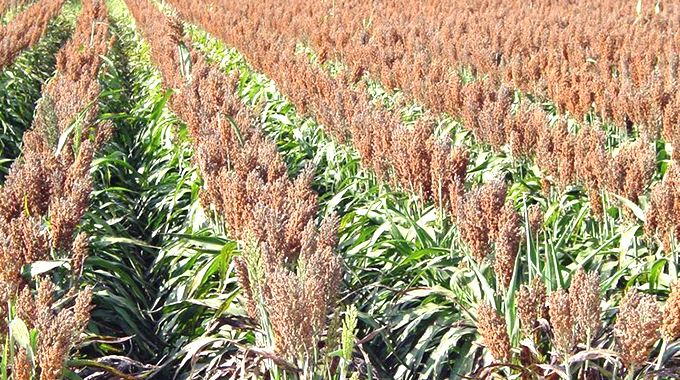Land reform not root cause of Zim’s food crisis

Jeffrey Gogo
Anna Brazier, a respected sustainable development expert from Harare, has rejected claims the fast-track land reform is to blame for the current food shortages in Zimbabwe — at least not in large parts.
“It (food security crisis) has deep historical, political, economic and ecological roots,” Brazier opined, in a recent scholarly article published by the leftist online magazine, Africa Is a Country.
“The causes . . . (evolve) from almost a century of detrimental land tenure and land management policies compounded by an increasing cycle of drought,” she told The Herald Business and Finance, in a separate interview.
Brazier accepted that the food security situation in the country was “shocking.”
But she said, citing research, land reform had improved food production and food security for smallholder farmers in Zimbabwe, and rejected a United Nations report that claimed land reform was the root cause of food insecurity.
Published last month, the report by Hilal Elver, the UN’s special rapporteur on the right to food, cites the lack of commercial maize production and land redistribution as the major causes of the existing food crisis here.
Brazier said: “This assertion is politically loaded and is already being used on social media by vested interest groups to argue that land reform should be reversed.
“The report also fails to mention the efforts by Zimbabwe’s Food and Nutrition Council, the Ministry of Health and Child Care and civil society in supporting rural communities and reducing chronic malnutrition in the country during the past couple of decades.”
More than 5,5 million Zimbabweans are faced with hunger following a severe drought last summer and the decade before, according to some estimates.
Brazier presented a series of arguments on the decline in food availability, including how that maize-focussed policies were a disaster, and that, without action, climate change was going to make things worse.
She observed how colonial land policies, which spilled into independent Zimbabwe, had “failed to support sustainable food production by smallholder farmers or develop local markets for nutritious food.”
The most notorious policies of the colonial era include the Land Apportionment Act and the Land Tenure Act, which drove away black farmers away from the most fertile lands and onto the so-called “Tribal Trust Lands” — basically overcrowded black rural communities situated in dry, hot, poor rainfall regions, unsuitable for agriculture.
Primarily, the Rhodesian strategy since the 1920s was to suffocate any form of agricultural activity by native farmers. And then turn them into cheap labourers on white-owned farms or in white-owned factories.
“. . . the Rhodesian government deliberately sought to destroy smallholder subsistence agriculture to push peasants into the workforce and clear the most productive land in the country for white commercial farmers intent on cash cropping and cattle ranching,” stated Brazier.
Brazier stressed that land reform “has presented an opportunity for a more just system of land distribution.”
She berated the widespread introduction and forced adoption of “maize growing” — replacing traditionally grown grains like millet and sorghum — “and the use of ploughs” as major contributors to land degradation in communal areas (Tribal Trust Lands).
Maize has now become Zimbabwe’s staple crop, but at great cost.
“Although maize can be part of a healthy diet, its nutritional worth is severely limited when it becomes the dominant food source,” Brazier detailed.
And all this has roots in the dubious land policies of colonial Zimbabwe.
“Pre-independence . . . natural resource management policies destroyed the existing production systems of diverse traditional crops and livestock and displaced most of the population into ‘Tribal Trust Lands,’”
Maize was first introduced to southern Africa 100 years ago, but production did not take a foothold until sometime in 1964 when Rhodesia developed a hybrid SR-52 maize variety, which reportedly boosted yields by over 300 percent.
After this, maize completely took over and the indigenous nutritious, drought-tolerant, pests and disease resistant small grains quickly went into oblivion, Brazier says.
When farmers began to select their own, more drought-tolerant maize varieties, the move was met by a heavy-handed response from the colonial government.
Rhodesia swiftly “made it illegal to sell open pollinated maize, forcing farmers into a debt cycle, as they had to buy hybrid seed, fertilisers and pesticides from companies owned by whites.”
The transition by most smallholder farmers who benefited from land redistribution into growing mostly cash crops like tobacco and cotton has not helped the food security situation either, said Brazier.
However, over the past five years, there have been multi-sectoral efforts “to redress the focus on cash cropping to achieve a balance between household income generation and the production of nutritious food.”
Brazier expressed concerns that the current structure of Command Agriculture Programme and the Transitional Stabilisation Programme, which prioritise maize production, might “have swung away from food security.”
The UN report mentions poor agricultural productivity as a major contributing factor to the current food security crisis. Mrs Brazier disputes this.
She argues that “there is no direct correlation between agricultural productivity and food security when the focus of productivity is on cash crops rather than nutritious food production.”
The sustainable development expert notes that the worst chronic malnutrition (stunting) rates were mostly found in the areas where agricultural (and maize) productivity are highest, such as Manicaland and Mashonaland.
“If the argument is that cash cropping raises incomes in rural areas and therefore improves access to nutritious food, this is relevant only where there are local markets for nutrient-dense foods. This is usually not the case in Zimbabwe,” Brazier observed.
In her report, Hilal Elver, the UN’s special rapporteur, found that about two thirds of Zimbabwe’s 14 million population were food insecure.
Most of those affected were women and children, she said, with 90 percent of children aged six months to two years not consuming enough food.
Ms Elver also identified other contributing causes to the crisis, including widespread corruption, economic sanctions, natural disasters and poverty.
There are other reasons for the food security crisis in Zimbabwe. Laziness, for example.
“Increasing food insecurity has also led to a cycle of food aid that has become so reliable that many communal farmers don’t bother to plant crops at all,” Mrs Brazier stated.
“They know that in the extremely likely event of a drought, the World Food Programme and other major donors will come to the rescue,” she added.
In light of climate change, which is expected to result in yield declines of up to 50 percent by 2050, Brazier recommended: “There will have to be a shift away from the agriculture focused economy and much more emphasis on supporting the sustainable production of nutritious food.”
God is faithful.










Comments